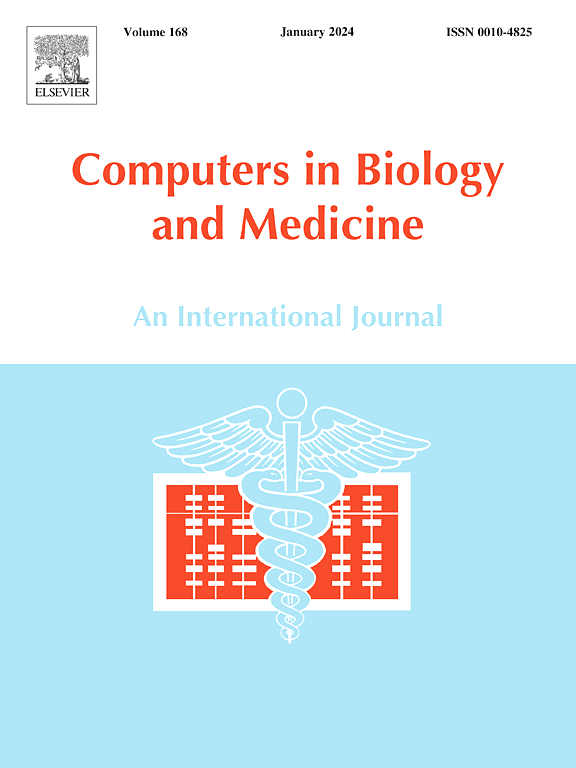利用凝视跟踪数据增强自闭症谱系障碍诊断的集合分类器
IF 7
2区 医学
Q1 BIOLOGY
引用次数: 0
摘要
社会问题:自闭症谱系障碍(ASD)的诊断仍然是一项巨大的挑战,尤其是在专家资源有限的地区。基于计算机的方法提供了一种有前途的解决方案,使诊断更容易获得。眼动追踪已成为辅助诊断 ASD 的一项重要技术。通常情况下,患者在观看根据既定范式设计的视频时,其注视模式会受到监控。在之前的一项研究中,我们开发了一种方法,通过使用随机森林组合处理眼球跟踪数据,将个体划分为 ASD 或典型发育(TD)患者,重点关注被称为联合注意的范式。方法:我们利用基于联合注意的刺激和之前研究中的 "浮动感兴趣区 "概念,确定了表明注视预期或延迟的特征。然后,我们测试了七种类平衡策略,应用了七种降维算法,并将它们与五种不同的分类器归纳算法相结合。结果:我们的研究结果表明,通过使用由不同归纳算法组成的异构堆叠元分类器,我们的F1得分达到了95.5%,与我们之前工作中82%的F1得分相比有了显著的提高。本文章由计算机程序翻译,如有差异,请以英文原文为准。
Enhancing ensemble classifiers utilizing gaze tracking data for autism spectrum disorder diagnosis
Problem:
Diagnosing Autism Spectrum Disorder (ASD) remains a significant challenge, especially in regions where access to specialists is limited. Computer-based approaches offer a promising solution to make diagnosis more accessible. Eye tracking has emerged as a valuable technique in aiding the diagnosis of ASD. Typically, individuals’ gaze patterns are monitored while they view videos designed according to established paradigms. In a previous study, we developed a method to classify individuals as having ASD or Typical Development (TD) by processing eye-tracking data using Random Forest ensembles, with a focus on a paradigm known as joint attention.
Aim:
This article aims to enhance our previous work by evaluating alternative algorithms and ensemble strategies, with a particular emphasis on the role of anticipation features in diagnosis.
Methods:
Utilizing stimuli based on joint attention and the concept of “floating regions of interest” from our earlier research, we identified features that indicate gaze anticipation or delay. We then tested seven class balancing strategies, applied seven dimensionality reduction algorithms, and combined them with five different classifier induction algorithms. Finally, we employed the stacking technique to construct an ensemble model.
Results:
Our findings showed a significant improvement, achieving an F1-score of 95.5%, compared to the 82% F1-score from our previous work, through the use of a heterogeneous stacking meta-classifier composed of diverse induction algorithms.
Conclusion:
While there remains an opportunity to explore new algorithms and features, the approach proposed in this article has the potential to be applied in clinical practice, contributing to increased accessibility to ASD diagnosis.
求助全文
通过发布文献求助,成功后即可免费获取论文全文。
去求助
来源期刊

Computers in biology and medicine
工程技术-工程:生物医学
CiteScore
11.70
自引率
10.40%
发文量
1086
审稿时长
74 days
期刊介绍:
Computers in Biology and Medicine is an international forum for sharing groundbreaking advancements in the use of computers in bioscience and medicine. This journal serves as a medium for communicating essential research, instruction, ideas, and information regarding the rapidly evolving field of computer applications in these domains. By encouraging the exchange of knowledge, we aim to facilitate progress and innovation in the utilization of computers in biology and medicine.
 求助内容:
求助内容: 应助结果提醒方式:
应助结果提醒方式:


